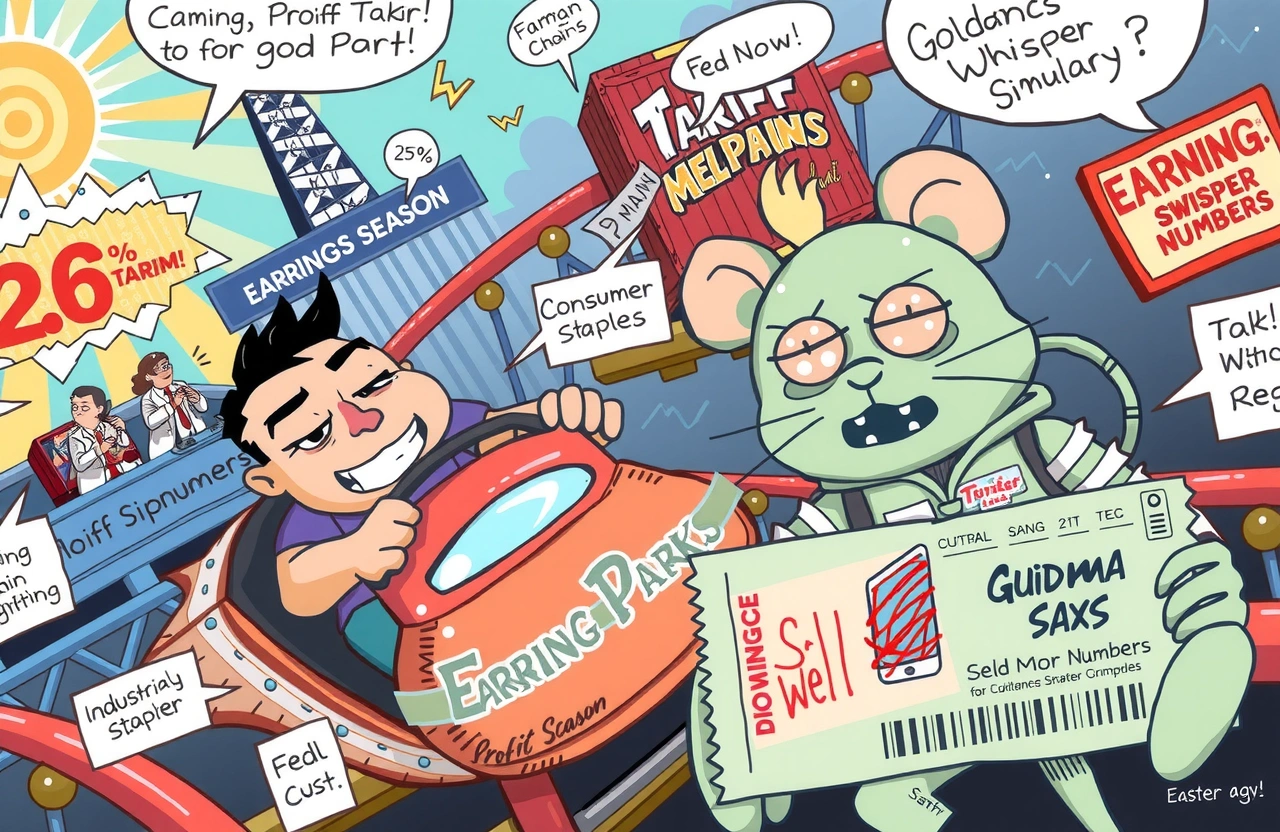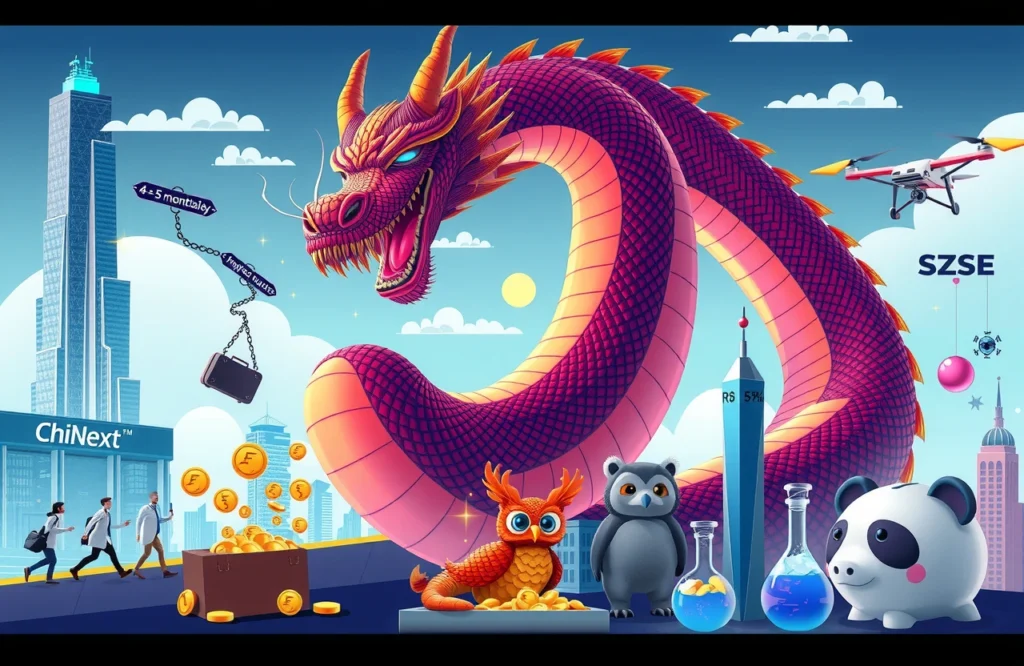The Gathering Storm Over Corporate Profits
As U.S. markets approach Q2 earnings season, a cloud of uncertainty hangs over corporate America. Goldman Sachs economists warn that mid-July’s earnings reports will present the first comprehensive assessment of how tariffs impact profitability. With mounting evidence that trade tensions have started biting into margins, investors must prepare for volatility driven by corporate America’s tariff test. This pivotal moment arrives as economic crosscurrents—resilient growth data versus trade headwinds—create a bifurcated market landscape.
The First Tariff Earnings Test: What Investors Must Know
The April tariff implementations will manifest directly in Q2 financial reports. David Kostin (大卫·科斯汀), Goldman Sachs’ Chief U.S. Equity Strategist, emphasizes we’re about to witness tariffs’ “direct impact” rather than projections. This fundamentally changes market dynamics:
– Historical precedents show tariff costs require 2-3 quarters to flow through supply chains
– Companies exceeding tariff cost pass-through expectations will outperform peers
– Sector exposures vary dramatically with industrials and consumer goods facing highest tariff pressure
The Pass-Through Dilemma
Corporate America faces a balancing act: pushing tariff costs to consumers versus absorbing margin erosion. Goldman’s research indicates most companies intend passing along increases, but the tariff test reveals corporate negotiating weaknesses. Firms lacking pricing power face double jeopardy—volume declines plus margin compression. Market reaction to preliminary earnings disclosures shows tariff impacts vary:
Case in point: General Mills’ profit warning sent shares tumbling while Nike’s tariff mitigation strategy sparked a 15% rally. This divergence highlights how individual responses to the tariff test will reshape sector hierarchies.
Market Recovery Meets Earnings Headwinds
Despite S&P 500 reclaiming April highs on strong U.S. data and Fed pivot hopes, earnings growth projections remain decidedly bearish. Composite analyst forecasts predict:
- Q2 earnings per share growth of 2.6% (lowest since Q1 2023)
- Only 6 of 11 sectors expected to show positive growth
- Margins compressing 27 basis points year-over-year
Interestingly, this earnings season unfolds against contradictory signals—macroeconomic resilience meeting microeconomic tariff test pressures. The friction between corporate guidance and economic indicators creates investor uncertainty.
Sector Vulnerability Assessment
Yardeni Research analysis confirms uneven tariff exposures across industries. Tariff-sensitive sectors face steepest earnings season hurdles:
Highest Risk Sectors
– Industrials: Machinery and equipment impacted by intermediate goods levies
– Consumer Staples: Packaged foods facing packaging and ingredient cost spikes
– Technology: Hardware manufacturers confronting component tariff creep
Resilient Sectors
– Healthcare: Minimal direct tariff linkages protected margins
– Utilities: Domestic focus provides natural tariff insulation
– Financials: Earnings driven by interest rates unaffected by trade policy
Goldman analysts note elevated margin forecast revisions downward for tariffs-exposed companies since March.
Goldman’s Contrary Optimism
Despite projecting tariff-driven earnings weakness, Kostin’s team maintains constructive equity outlook citing:
- Historically lenient market reactions during earnings misses
- Strong institutional investor positioning ahead of Fed easing cycle
- Capital expenditure resilience despite tariff environment
The investment bank recently raised its year-end S&P 500 target to 5,500—betting tariff impacts get overshadowed by monetary tailwinds.
Navigating Earnings Season: Investor Strategies
With tariffs introducing asymmetric risks across sectors, Goldman recommends tactical positioning adjustments:
Downturn Protection
– Increase exposure to SaaS companies with recurring revenue models
– Target multinationals holding price-setting power
– Diversify with commodities acting as tariff inflation hedges
Historical pattern analysis confirms downtime protection assets outperform during tariff-impacted earnings cycles. Consumer discretionaries particularly warrant caution given unpredictable spending shifts.
Positioning Portfolios For Trade Policy Realities
As tariff effects transition from theoretical threat to concrete reality, discerning winners from losers becomes paramount. Financial reports revealing excess inventory builds or contracting gross margins signal vulnerability. Forward-thinking investors should:
- Scrutinize management commentary on tariff pass-through success rates
- Monitor intra-quarter pricing adjustments for consumer-facing products
- Calculate inventory/sales ratios revealing unsold tariff-priced goods
The ultimate investment thesis continues evolving beyond initial tariff test reactions—generating lasting profits requires examining how firms reconfigure supply chains amid enduring trade tensions.
Beyond the Headlines: Long-Term Implications
The true significance of this earnings season extends beyond quarterly numbers:
– Companies demonstrating tariff adaptability gain strategic advantage
– Firms establishing alternative sourcing prove superior long-term investments
– Pricing power validation creates durable shareholder value
While markets typically focus on near-term earnings surprises, smart investors recognize this tariff test provides rare insight into corporate resilience capabilities.
Actionable Insights For Market Participants
The imminent corporate transparency moment offers investors critical intelligence beyond profit figures. Focus on developing robust decision frameworks centered on dual priorities—exploiting market emotion surrounding earnings misses while identifying structural winners emerging from trade disruption. Rather than knee-jerk reactions to tariff impacts, build watchlists of companies executing:
- Supplier diversification beyond China dependence
- Vertical integration mitigating input cost volatility
- Product innovation offsetting price sensitivity
Significant wealth generation potential exists in deployment phase after tariff test volatility—patterns repeating across earnings cycles show that thematic investing outperforms reactive trading.




